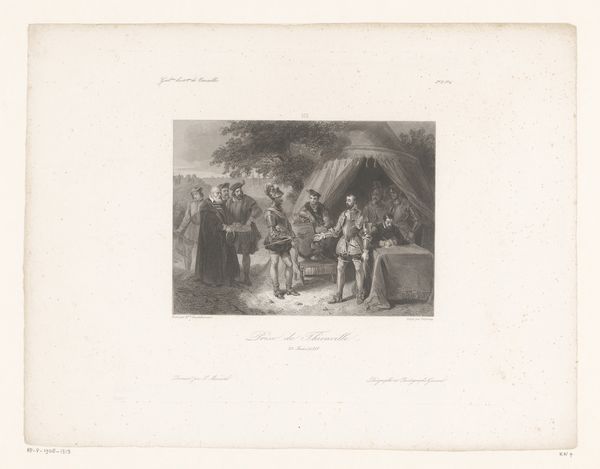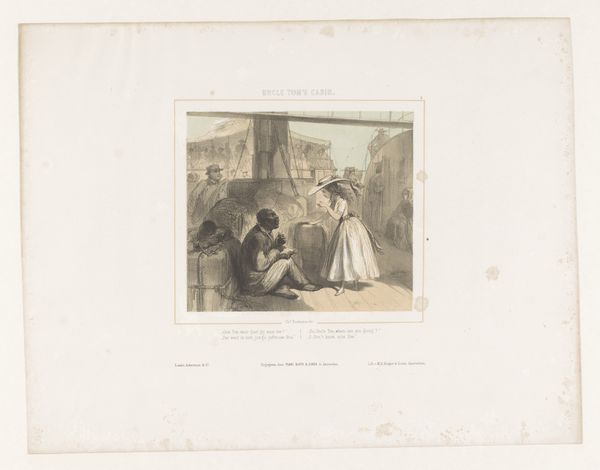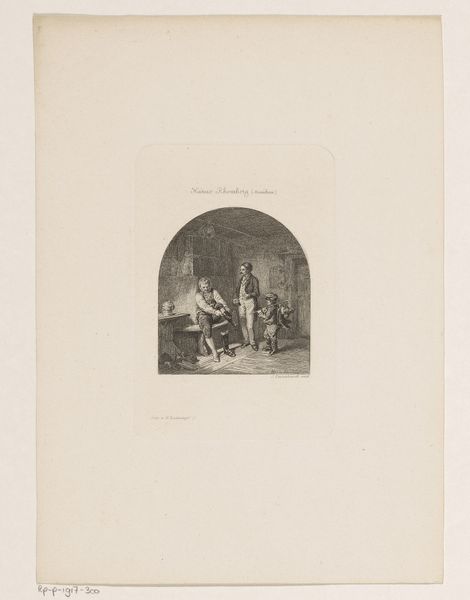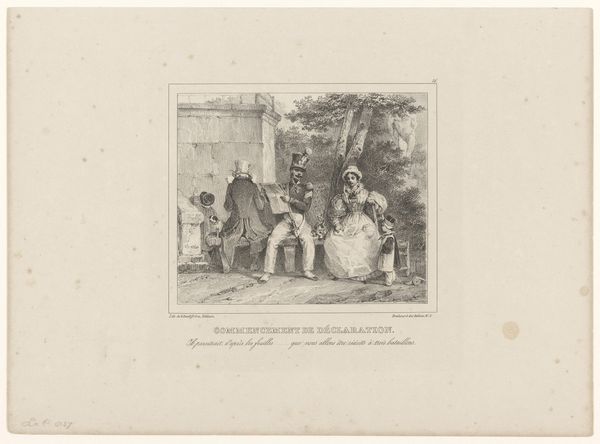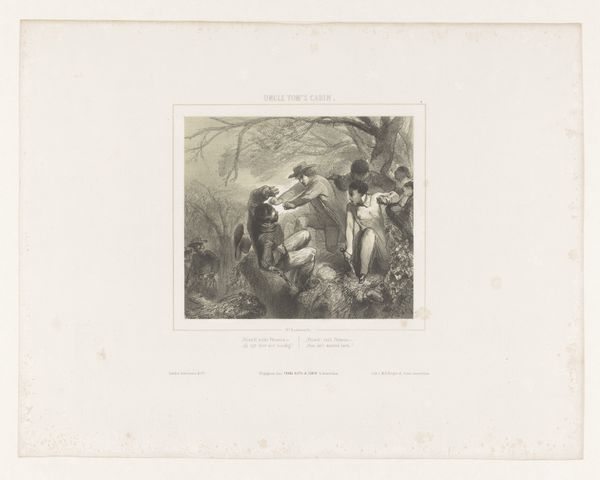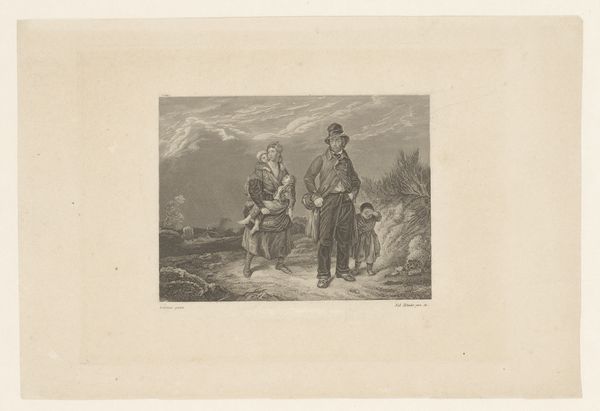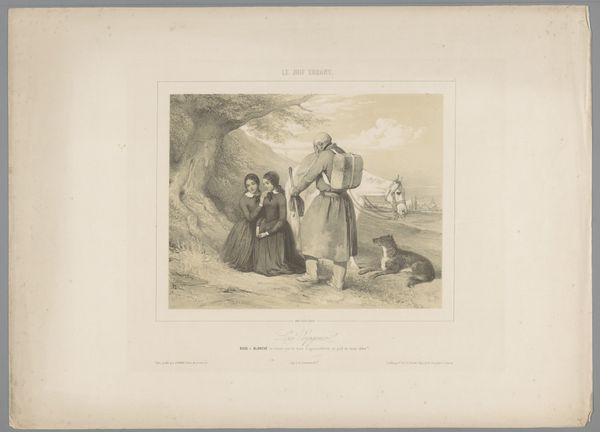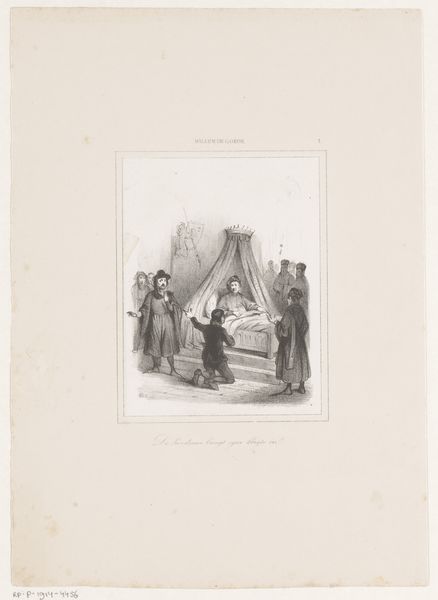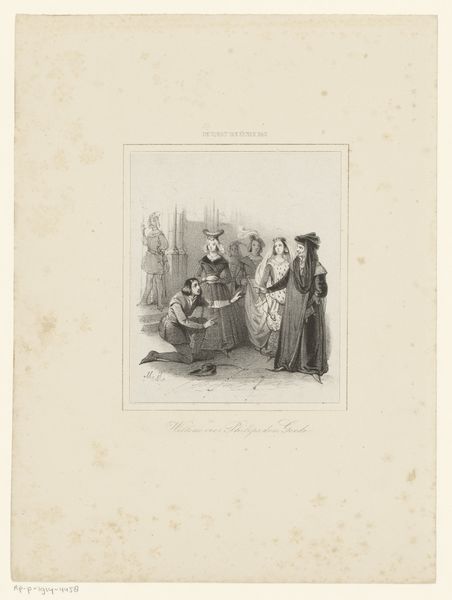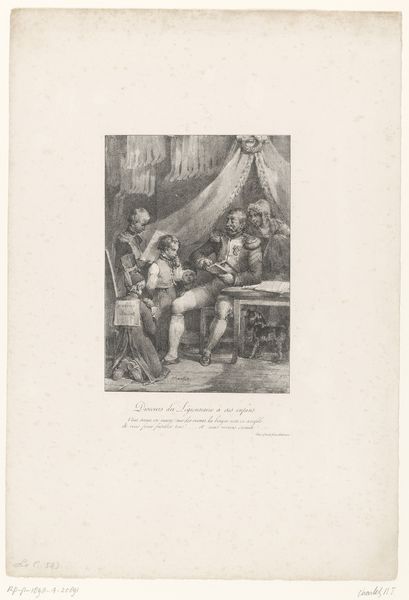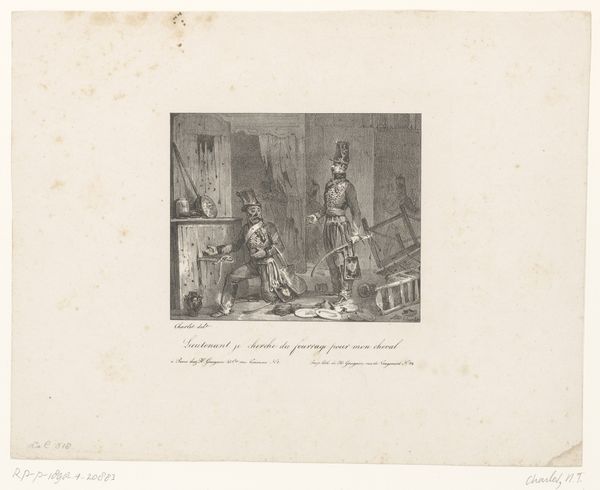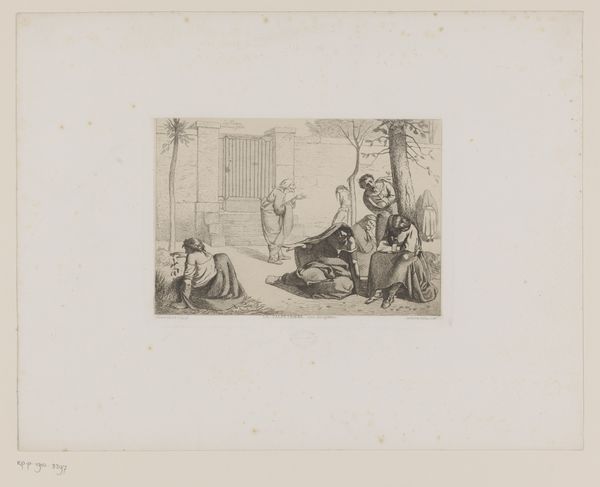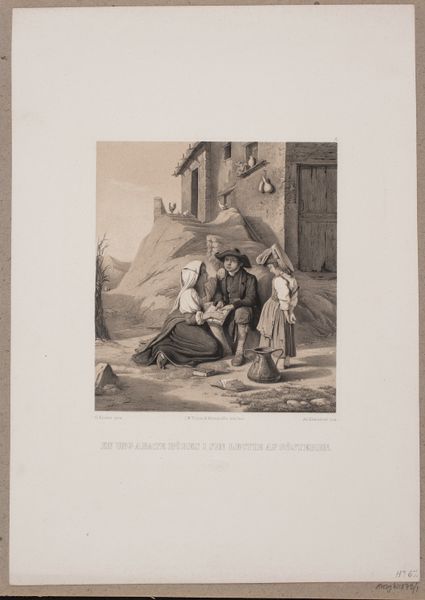
drawing, print, paper, ink, engraving
#
portrait
#
drawing
#
mother
# print
#
paper
#
ink
#
romanticism
#
genre-painting
#
engraving
Dimensions: height 274 mm, width 364 mm
Copyright: Rijks Museum: Open Domain
Curator: Paul Gavarni’s “Jongen met aap en zijn moeder,” created in 1835, greets us today—a print combining ink and engraving on paper. What's your immediate take? Editor: A quiet melancholy permeates the scene. The confined, almost claustrophobic space really amplifies this sense of, dare I say, subdued desperation? Curator: Yes! There’s an inescapable feeling of enclosure, the limited resources apparent in the cramped attic. It strikes me, too, how Gavarni turns to domestic intimacy—genre painting at its most revealing—to explore broader social anxieties. Editor: Absolutely, you sense that strain, economically. This is not leisure. The boy, maybe reluctantly, takes on his monkey trade; that poor animal! We see this transaction between them as it literally impacts every plane of the space. His mother seems resigned, sewing or something—sustaining life. You sense labor as her constant activity. What's that inscription beneath the image? Curator: Ah, yes – "Jeunes gens venus trop tard dans un monde trop vieux…" Roughly translated, "Young people who came too late into a world too old…” Melancholic, right? It speaks to their constrained possibilities within the romanticized ruins of something like the attic they’re forced to inhabit. There’s a wistful acceptance of predetermination embedded there. Editor: The materiality supports this interpretation so powerfully. Look at how the texture and even tonal darkness increases the effect here—a grimy Romanticism. Not unlike the labor happening for the leisure classes to enjoy, no? Curator: Right – that sense of things being pressed down, bearing a weight—both tangible and emotional. You wonder, what are the material realities weighing them down – the social scripts, and physical exhaustion of the characters? What if Gavarni’s own print making mirrors this forced commerce? Editor: Perhaps—the print production itself becoming emblematic of repetitive, often invisible labor that sustained so much early industrial capitalist momentum? Thinking of paper manufacturing— rags transformed, the chemicals—that support our present! Curator: What resonates most for me, now, is Gavarni’s gentle, understated depiction. Not glorifying or romanticizing it, just a candid gaze into this particular corner of nineteenth-century life and that inscription just stings you a bit. Editor: I'm haunted by thinking of every stage in making prints. The material of their world became the material of art here. Thanks for bringing it to my attention!
Comments
No comments
Be the first to comment and join the conversation on the ultimate creative platform.
